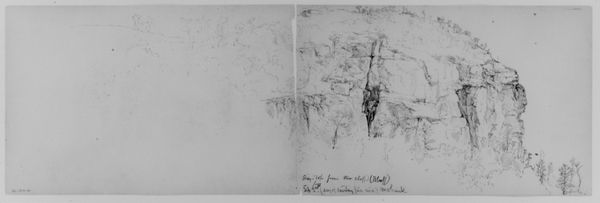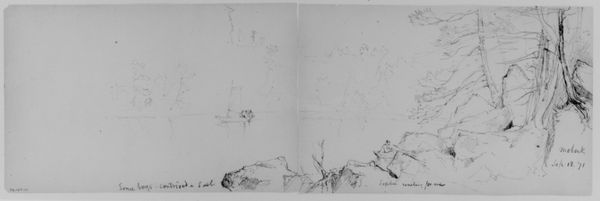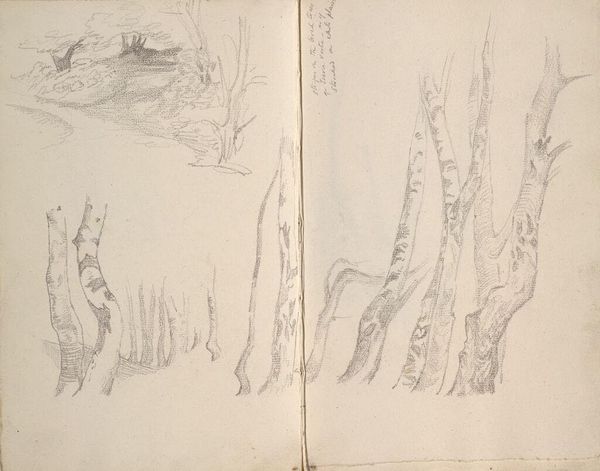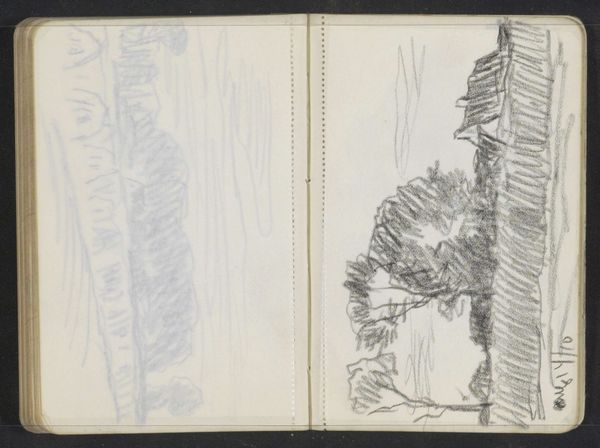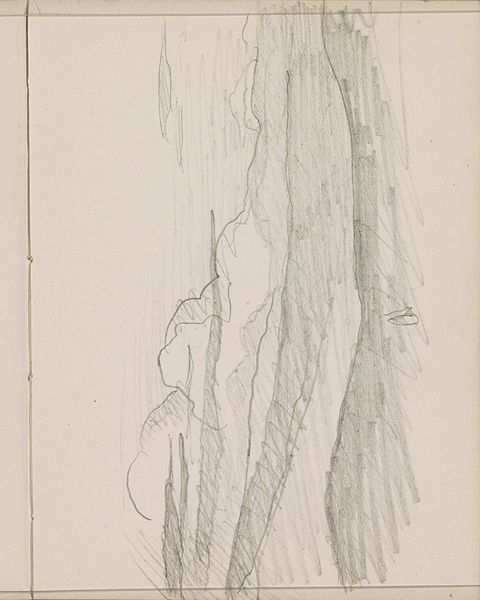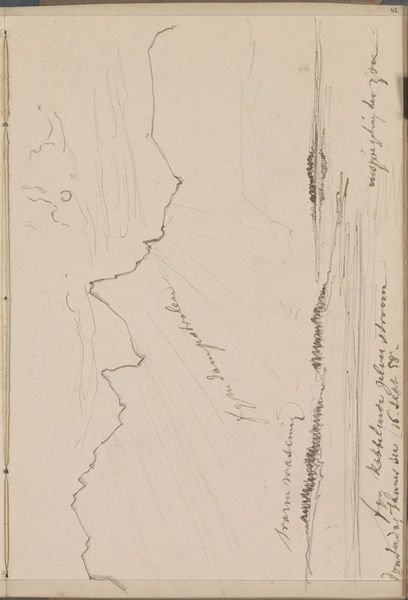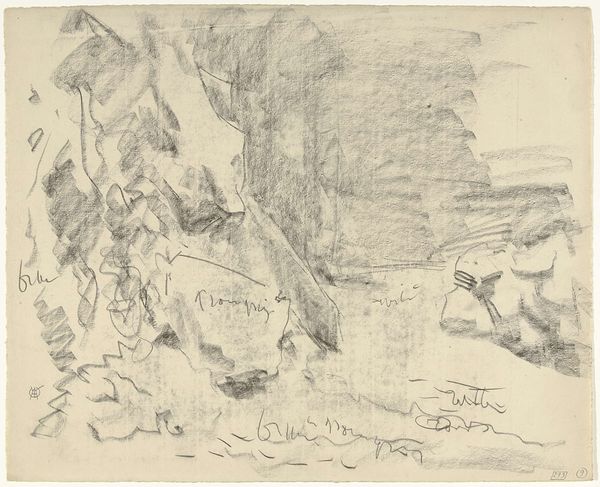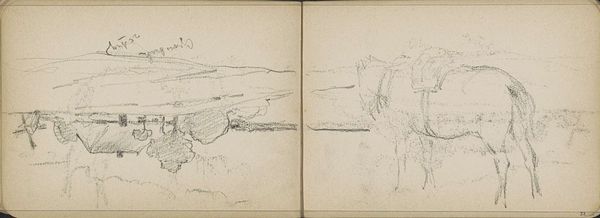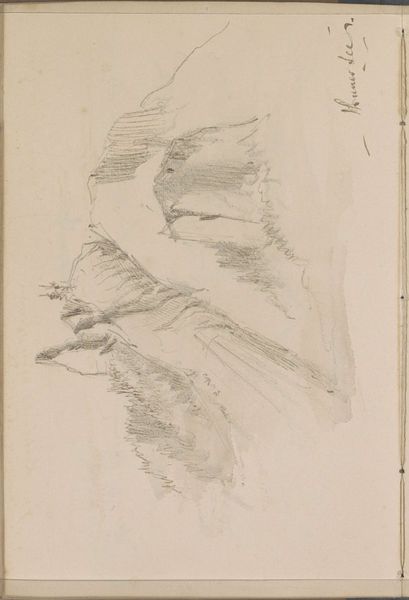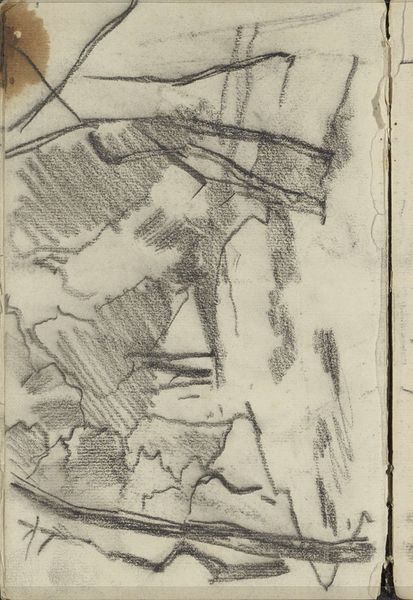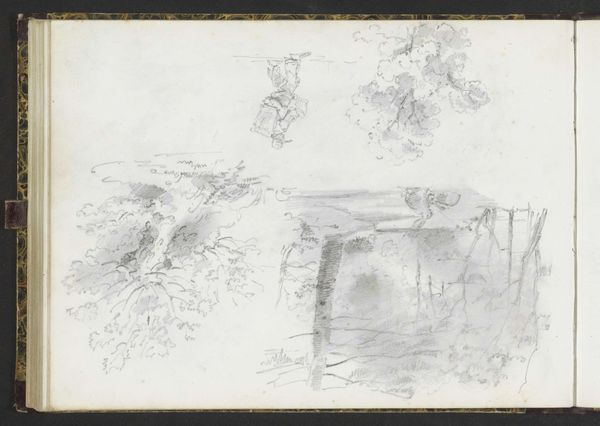
Balance Rock, Pine Hill, Walton, 1871 (from Sketchbook) 1870
0:00
0:00
drawing, pencil
#
drawing
#
pencil sketch
#
landscape
#
pen-ink sketch
#
pencil
#
hudson-river-school
Dimensions: 5 1/2 x 8 3/4 in. (14 x 22.2 cm)
Copyright: Public Domain
Curator: It's just a humble pencil sketch, really. But Daniel Huntington's "Balance Rock, Pine Hill, Walton," dating from around 1870, captures a fleeting moment of communion with nature that speaks volumes. It lives here in the Met's collection. Editor: My first impression is solitude. Look at that figure perched atop the rock – dwarfed by the landscape, almost swallowed up. The delicate lines emphasize the impermanence, a world that's in constant transition. Curator: Indeed. It embodies the Hudson River School's fascination with the sublime and the picturesque, wouldn't you agree? There’s the wildness and grandeur of nature right up against that tiny human figure, suggesting a delicate balance, a reverence. And the diptych style emphasizes that balance: rock versus the softer organic verticality of the pine trees. Editor: I’m thinking more about the actual making of this work. The ready availability of pencil and paper, for instance, meant that artists like Huntington could engage with landscape immediately and economically. It makes the creation of art democratic; no longer bound to high production values. This work is made to travel, and, like land ownership at the time, more mobile. Curator: A very interesting point. The mobility of materials certainly reflects the accessibility of nature to a wider range of people in the 19th century. But in addition, for Huntington, there's also a palpable sense of longing and perhaps the human ambition to master and frame it. Editor: True, it’s hard not to acknowledge the tension embedded in how nature and figure interact in the work: they amplify each other but are distinct—neither one is complete on its own. That placement becomes meaningful through Huntington’s labor and craft, so we must credit his making of this art. Curator: Exactly. Huntington has caught an instant. These sketches become evidence of an encounter, which makes the viewer complicit in both nature’s vulnerability and endurance. Thank you for providing some material for reflection, literally! Editor: Well, I am glad we explored how the immediacy of a pencil allows for this record to exist and still provide its audience an intimate observation of place and making.
Comments
No comments
Be the first to comment and join the conversation on the ultimate creative platform.
